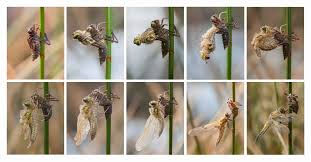
by Cynthia Andrews
Jellies
and
Dragonlets
In our story, Engel has a chance encounter with the jelly maidens. Clearly, if she had known more about jellyfish, she would not have followed them to their deaths. Fortunately, Engel did not meet her death because she is not a jellyfish, but it's never too late to get your facts straight!
Did you know?
1 Jellyfish are not fish; they are plankton. Plankton float around because they can't swim! Jellyfish can move vertically but not horizontally.
2 They come in all shapes and sizes. For 650 million years, thousands of different species have been floating within the world's oceans.
3 All jellyfish have a mouth in the center of their body, and some have tentacles as long as 100 feet. They have very simple bodies without a brain or a heart.
4 They are 98 percent water. When they wash up on shore, they mostly evaporate.
5 Small jellyfish eat plankton and algae while bigger jellyfish eat crustaceans and other jellyfish.
6 They will sting you! If you bump into a jellyfish beware of their tentacles. They don't search for humans; humans find them. For all they know, you could be a loggerhead turtle, a whale shark, or a sunfish hunting for dinner. People in China and Japan also eat jellyfish, which are considered a delicacy.
7 If they do sting you, remove any tentacles clinging to the skin. Don't wash the area with fresh water -- it could release more venom into your body. Use rubbing alcohol, ammonia, vinegar, or urine (yes, you read right). I personally prefer to apply a meat tenderizer or a mixture of baking soda and water with a popsicle stick to force the venum from under the skin. Get immediate medical attention if you suffer from shortness of breath, hives, or wheezing.
7 Some young fish actually live on or even in jellyfish. They hide out in the tentacles to avoid being eaten by predators until they mature.
8 South Carolina jellyfish species include:
Cannonball Jellyfish- most common jelly swimming in South Carolina waters during the summer and fall. It has a solid-looking body with a white bell and no tentacles, and it is the least venomous of all.
Lion's Mane- Seen in the winter months, the bell, measuring 6-8 inches, is saucer-shaped with reddish-brown oral arms and eight clusters of tentacles hanging underneath. The sting is described as a burning sensation.
Mushroom Jelly- Does not sting, chunky jelly without tentacles, growing 10-20 inches in diameter
Southern Moon Jelly- Take caution, pretty pink or blue jellyfish with a mild sting
Sea nettle- stay away from large numbers of floating saucer-shaped jellies, usually brown or red, and 6-8 inches in diameter
Sea Wasp or Box Jelly- shaped like a box without tentacles, with a very painful sting.
Portuguese Man of War- extremely dangerous, not a single jellyfish but a purple-blue flotilla colony of several members
https://www.eatstayplaybeaufort.com/why-are-cannonball-jellyfish-washing-up-on-sc-coast/
https://scaquarium.org/our-animals/moon-jelly/
https://www.dnr.sc.gov/marine/pub/seascience/jellyfish.html
https://animals.howstuffworks.com/marine-life/jellyfish.htm
https://www.google.com/search?
The seaside dragonlet is a miracle of nature because it can live in the South Carolina coastal saltwater environment. Dragonlets start their life as an egg on the bottom of a saltwater marsh pool. The eggs hatch into larvae, also called nymphs. They are voracious hunters with six legs, large eyes and small wing buds on their thorax. They can breathe by drawing the oxygen out of the water and self-regulate the salt content in their bodies. For two years, the little nymph must survive many predators, like fish, frogs, and birds, before it can leave the water and transform into an adult, where it learns to breathe air and fly new wings. The new dragonlet will live and reproduce for only six months.
Read and watch more about dragonflies:
www.kqed.org/science/1915435/a-baby-dragonflys-mouth-will-give-you-nightmares
https://auth1.dpr.ncparks.gov/odes/a/accounts.php?id=95
https://tarawildlife.com/10-astounding-things-you-should-know-about-the-dragonfly
https://www.howitworksdaily.com/the-life-cycle-of-a-dragonfly/
https://www.storagetwo.com/blog/2020/7/local-wildlife-weekly-1-seaside-dragonlet







